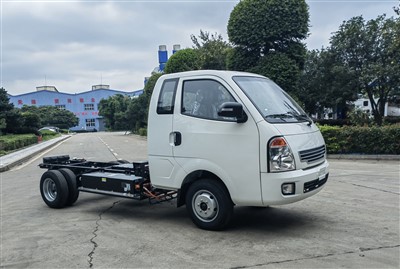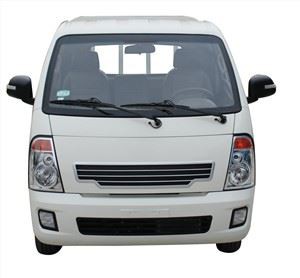Essential Guide to Fire Extrication Tools: Everything You Need to Know
Fire extrication tools are vital for rescue operations, providing emergency responders with the means to access and extricate individuals trapped in vehicles or buildings following accidents or disasters. This comprehensive guide will explore various types, uses, and best practices for fire extrication tools to enhance your understanding and preparedness in emergency situations.
Understanding Fire Extrication Tools
Fire extrication tools are specialized equipment used by firefighters and rescue personnel to save lives. The term “extrication” refers to the process of removing someone from a dangerous situation, often involving heavy machinery or collapsed structures. Below, we look at the different types of extrication tools and their functions.
Types of Fire Extrication Tools
1. Hydraulic Rescue Tools
Hydraulic rescue tools leverage hydraulic power to operate and are commonly used in fire rescue operations. These tools include:
- Hydraulic Shears: Used to cut through metal, glass, and other materials.
- Spreaders: Designed to pry open doors, hoods, and create space in tightly confined areas.
- Rams: Employed to push or pull objects apart.
2. Manual Extrication Tools
Some scenarios require the use of manual tools, which can be more accessible and versatile:
- Saws: Used for cutting through various materials.
- Jacks: Craftily lifting vehicles or debris.
- Crowbars: Ideal for prying and leveraging objects.
3. Airbags
Rescue airbags can lift heavy vehicles or debris, allowing responders to access trapped individuals without further endangering them. These include:
- High-pressure airbags: Lift substantial weights quickly.
- Low-pressure airbags: Used for delicate situations where precise lifting is necessary.
4. Specialty Tools
These tools may include cutting tools designed specifically for particular scenarios:
- Thermal Imaging Cameras: Help locate victims in low visibility conditions.
- Rescue Vacuum Mattress: Stabilizes and secures victims during transport.
The Importance of Fire Extrication Tools
The effectiveness of fire extrication tools greatly influences successful rescue operations. Having the right tools available can mean the difference between life and death. Here are some key points on their importance:

- Quick Response: Enables emergency responders to access trapped victims promptly.
- Versatility: These tools can be used in multiple situations, including vehicle wrecks, building collapses, and natural disasters.
- Enhanced Safety: Tools are designed to maximize the safety of both the victims and responders.
Best Practices for Using Fire Extrication Tools
Utilizing fire extrication tools requires knowledge, training, and adherence to safety protocols. Here are best practices to consider:
1. Training and Familiarization
All personnel should undergo thorough training on using each type of tool. Regular practice simulations are essential to ensure proficiency.
2. Conducting Safety Checks
Before each use, tools should be inspected for functionality, wear and tear, and proper storage conditions to prevent accidents.
3. Establishing Rescue Protocols
Clear communication and established protocols must be in place to coordinate the rescue team’s efforts efficiently. Regular drills can help reinforce these practices.
4. Assessing the Scene
A thorough assessment of the rescue scene must be made, evaluating hazards, determining safe access points, and prioritizing victim location.
5. Effective Teamwork
Successful extrication relies heavily on teamwork. Roles should be assigned, and all team members must understand their responsibility throughout the rescue operation.
Examples of Fire Extrication Scenarios
Understanding real-world applications of fire extrication tools can provide additional insights into their importance:
1. Vehicle Extrication
In cases of car accidents, firefighters often employ hydraulic rescue tools to safely free individuals trapped in damaged vehicles. For example, using spreaders to create an opening allows access to victims while minimizing the risk of injury from sharp metal edges.
2. Building Collapses
During a building collapse, rescuers might use airlifting bags to stabilize sections of debris and create clear pathways for extraction. Thermal imaging cameras are instrumental in locating survivors beneath rubble.
3. Urban Search and Rescue (USAR) Operations

In USAR scenarios after natural disasters, teams utilize a combination of manual and hydraulic tools to remove debris while ensuring the safety of trapped individuals.
Choosing the Right Fire Extrication Tools
When selecting fire extrication tools, consider the following key factors:

- Type of Emergency: Different situations may require specific tool types.
- Tool Quality: Prioritize high-quality, durable tools that are reliable in critical moments.
- Training Availability: Choose tools that your team can be trained on effectively.
- Storage and Maintenance: Ensure easy access for tools while keeping maintenance routines in mind.
FAQ Section
1. What are fire extrication tools used for?
Fire extrication tools are used to rescue individuals trapped in vehicles or structures during emergencies, providing highly specialized solutions for various scenarios.
2. How can I ensure the tools are safe to use?
Conduct regular inspections and maintenance, and ensure that all personnel undergo proper training to handle the tools effectively and safely.
3. What is the difference between hydraulic and manual tools?
Hydraulic tools use hydraulic power to operate and are ideal for heavy extrication, while manual tools rely on human strength and are generally more versatile.
4. Can extrication tools be used in non-fire emergencies?
Yes, these tools are versatile and can be used in various emergencies, including vehicle accidents, building collapses, and natural disasters.
5. What should I do if I encounter a trapped individual?
Call emergency services immediately and do not attempt to extricate the person without appropriate tools and training, as doing so could cause further injury.
6. How often should fire extrication tools be replaced or upgraded?
Regular inspections should determine functionality, but generally, tools should be assessed annually for wear and replaced if they are found to be ineffective or unsafe.
